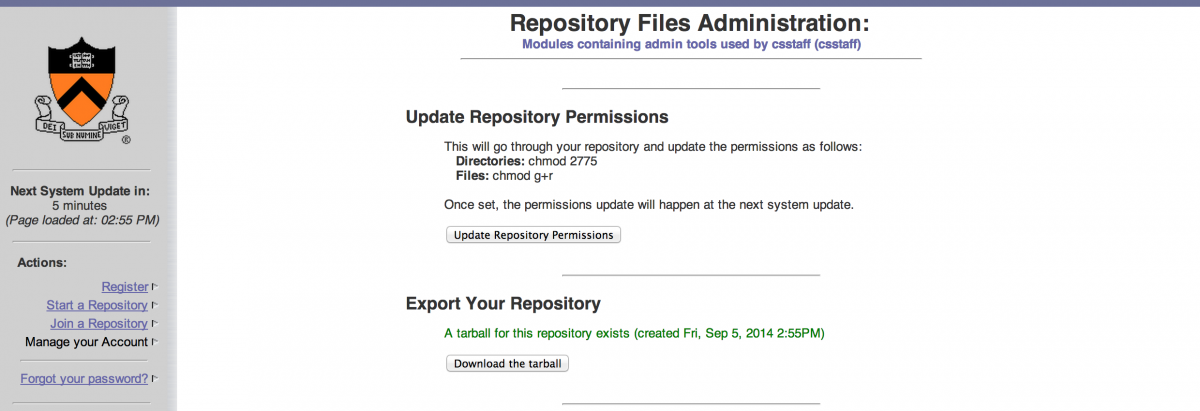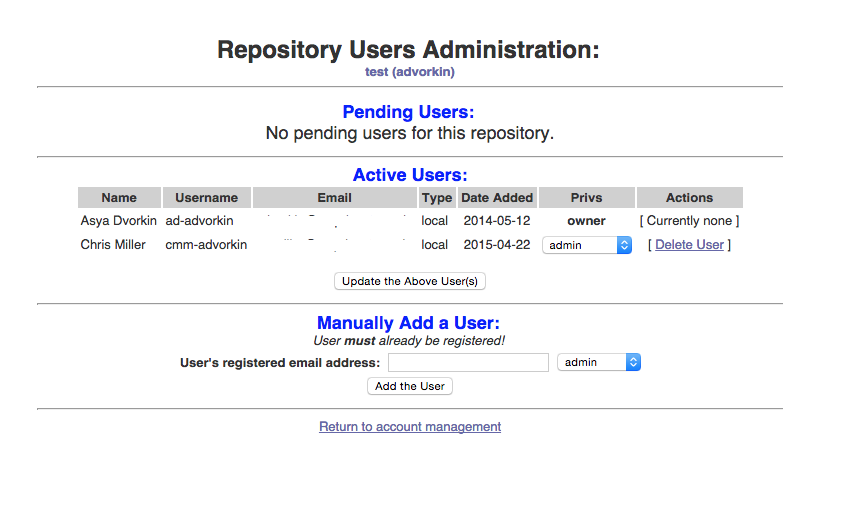The CS Department CVS Server is Retired
Please note that the CS Department CVS Server was retired as of July 15, 2015. This page remains as a reference.
As of July 15, 2015, the CS Department CVS server will be retired. All repositories hosted on the server will go away at that time. Any repository or data you wish to keep which is presently stored on the CVS server must be retrieved before 09:00 on July 15, 2015.
This document will assist you in retrieving your data from the CVS server in advance of the July 15 retirement. If you are an active member of the University, and you wish to migrate your repository to an OIT-hosted SVN service, please see this CS Guide Page on CVS to SVN conversion.
There are two main types of data you may wish to preserve from the CVS server, the actual repo data, and then the access control data (who are your repo members and their access levels).
Retrieving a Repository Tarball
-
Log into the CVS server
-
Click on Manage your Account, and find a repository name that you would like to preserve.
-
Under Actions for that repository, click the Files link.
-
Click the Export this project's repository button.

-
Once the tarball is prepared, click the Download the tarball button.

-
The tarball includes all of your repository files. If you wish to process it further, such as converting it to another repository type, transfer the file somewhere with enough space to unpack it, such as the public scratch space at /n/fs/scratch. Note that if using scratch space, you should make sure to finish your further processing on the same day you start it in order to avoid any trouble from the automatic cleaning of scratch space.
Retrieving your Access Control Information
-
Log into the CVS server
-
Click on Manage your Account, and find a repository name that you would like to preserve.
-
Under Actions for that repository, click the Users link.
-
Print or otherwise save this page. It contains a list of all repository users, their e-mail addresses, and their access levels for the repository. This information may be helpful to you in rebuilding an access list for a new repository if you migrate the data.
